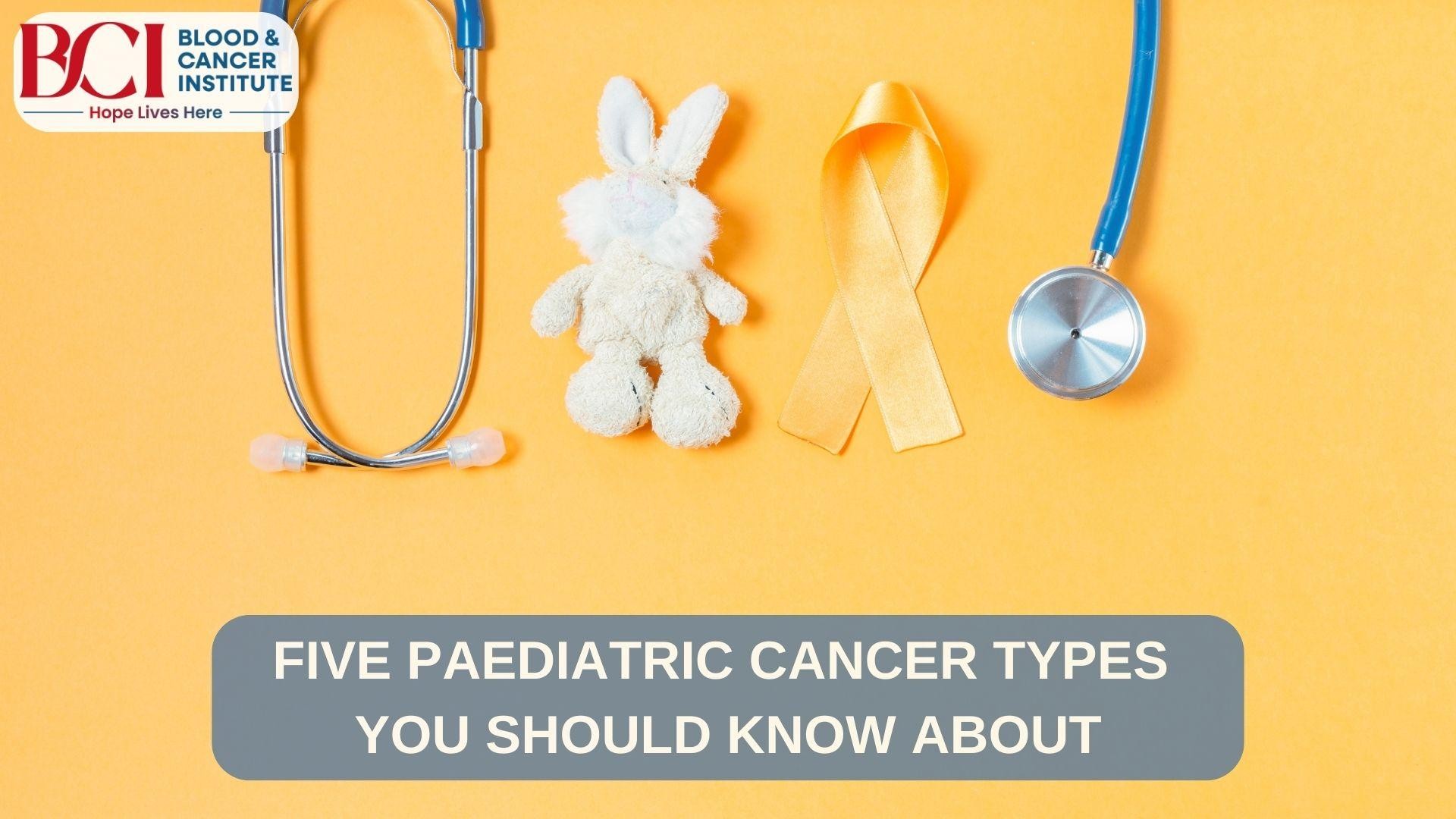
- By : BCI
- General
- Comments: 0
Five Paediatric Cancer Types You Should Know About: A Guide From The Best Paediatric Cancer Specialist In Surat
Cancer is a devastating diagnosis for anyone, but it’s particularly heart-wrenching when it affects children. While paediatric cancer is rare compared to cancers in adults, it remains one of the leading causes of death by disease for children under the age of 15. Understanding the most common types of paediatric cancer can help parents, caregivers, and the community recognize the warning signs and seek early treatment from a cancer specialist in Surat.
In this blog post, we’ll explore five paediatric cancer types you should know about, including their symptoms, treatment options, and outlook.
1. Leukaemia
What is it?
According to the blood cancer specialists in Surat, Leukaemia is the most common cancer in children, accounting for nearly one-third of all paediatric cancer cases. It affects the blood and bone marrow, where blood cells are produced. The two main types of Leukaemia seen in children are:
● Acute Lymphoblastic Leukaemia (ALL): The most common form.
● Acute Myeloid Leukaemia (AML): Less common but more aggressive.
Symptoms:
● Fatigue and weakness
● Frequent infections
● Unexplained fever
● Easy bruising or bleeding
● Bone or joint pain
● Swollen lymph nodes
Treatment Options:
Treatment for Leukaemia often includes chemotherapy, targeted therapy, and in some cases, bone marrow or stem cell transplants. Advances in medical science have led to high survival rates, particularly for ALL, where over 90% of children achieve remission.
2. Brain and Central Nervous System (CNS) Tumours
What are they?
Brain and CNS tumours are the second most common type of paediatric cancer. These tumours develop in the brain or spinal cord and can be benign (non-cancerous) or malignant (cancerous). Common types in children include medulloblastomas, gliomas, and ependymomas.
Symptoms:
● Persistent headaches
● Nausea and vomiting
● Balance and coordination issues
● Vision, hearing, or speech difficulties
● Seizures
Treatment Options:
Treatment depends on the tumour’s location and type but typically includes surgery to remove the tumour, followed by radiation therapy, chemotherapy, or both. Early detection and advances in neurosurgery have improved survival rates for many types of paediatric brain tumours.
3. Neuroblastoma
What is it?
Neuroblastoma is a cancer that arises in immature nerve cells, usually starting in the adrenal glands located above the kidneys. It primarily affects children under the age of 5 and is rare in older children or adults.
Symptoms:
● A lump or swelling in the abdomen, chest, or neck
● Bone pain
● Unexplained weight loss
● Difficulty breathing or swallowing (if the tumour presses on vital structures)
Treatment Options:
Treatment varies based on the stage and risk category of the cancer. Options include surgery, chemotherapy, radiation therapy, and immunotherapy. For advanced cases, find the best cancer hospitals in Surat that use stem cell transplants. The prognosis is better for younger children, especially when the cancer is caught early.
4. Wilms Tumour
What is it?
Wilms tumour is a kidney cancer that primarily affects children, usually between the ages of 3 and 4. It is relatively rare but highly treatable, especially when diagnosed early.
Symptoms:
● A painless lump or swelling in the abdomen
● Blood in the urine
● Fever
● Loss of appetite
● High blood pressure
Treatment Options:
Wilms tumour is often treated with surgery to remove the affected kidney, followed by chemotherapy or radiation therapy. In many cases, children with Wilms tumour have excellent survival rates, with more than 90% responding well to treatment.
5. Lymphomas
What are they?
Lymphomas are cancers that develop in the lymphatic system, which is part of the immune system. The two main types of lymphoma in children are:
● Hodgkin Lymphoma (HL): Characterized by the presence of Reed-Sternberg cells.
● Non-Hodgkin Lymphoma (NHL): A more aggressive type that is common in children.
Symptoms:
● Swollen lymph nodes, often painless
● Persistent fever
● Night sweats
● Fatigue
● Unexplained weight loss
Treatment Options:
Treatment often involves chemotherapy, radiation therapy, or a combination of both. Immunotherapy and targeted therapy are newer options showing promise for treating lymphoma in children. The prognosis for Hodgkin lymphoma is excellent, with a high survival rate, while outcomes for Non-Hodgkin lymphoma vary depending on the subtype and stage at diagnosis.
Recognizing the Signs and Taking Action
While paediatric cancers are rare, early detection is crucial for effective treatment and better outcomes. If your child shows persistent symptoms that don’t resolve with routine care, it’s important to consult a paediatric cancer specialist in Surat. Many of these symptoms can overlap with other common illnesses, so professional evaluation is key.
Conclusion
Paediatric cancer is a challenging journey for children and their families, but awareness, early detection, and advancements in medical treatment provide hope. If you or someone you know is facing a paediatric cancer diagnosis, remember that support is available. From medical teams to community resources, you don’t have to face this journey alone. Together, we can fight for a future where all children have a chance to grow up healthy and cancer-free.
